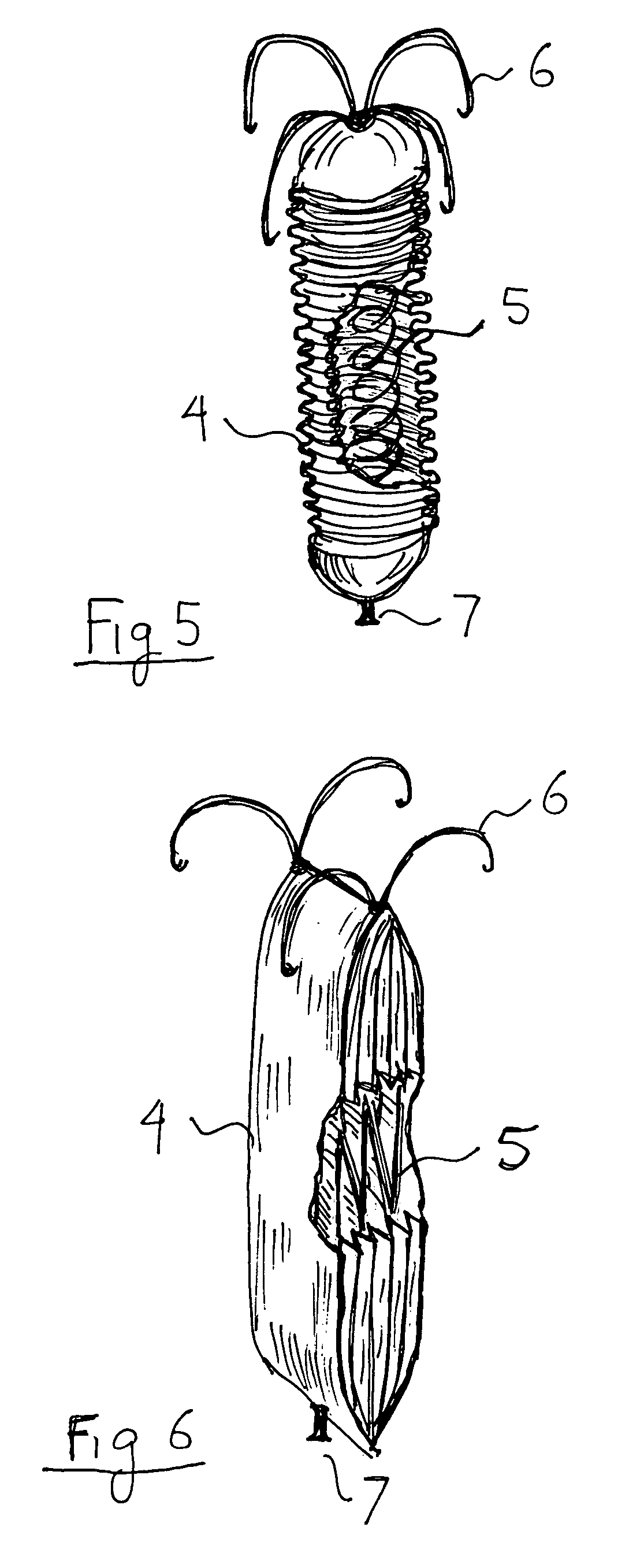Mechanical means for controlling blood pressure
a technology of blood pressure and mechanical means, applied in the field of high blood pressure control, can solve the problems of limiting the mobility of patients, taking regular medication, side effects, and needing to keep these batteries charged, and achieve the effect of reducing the preventing the rise of blood pressure, and increasing the elastic volume of the arterial system with blood pressur
- Summary
- Abstract
- Description
- Claims
- Application Information
AI Technical Summary
Benefits of technology
Problems solved by technology
Method used
Image
Examples
Embodiment Construction
[0016] The inventions restores the lost volumetric elasticity to the arteries by first decreasing the volume inside the arteries, allowing it to increase elastically as the pressure goes up. Since the amount of blood pumped out by the heart into the aorta during each contraction is about 60 cubic centimeter (cc), even a change in volume as small as 5 cc during each heartbeat will have an effect on systolic blood pressure and increasing the aortic volume by 10 cc will reduce an abnormally high blood pressure to a normal value. Since the change in volume of the blood in the aorta is comparable to the volume pumped out with each contraction, changing the volume of the aorta by 10 to 20% is sufficient to prevent high blood pressure and can be accomplished by an external or internal elastic device. An external device is simpler and can achieve a higher volumetric elasticity, however it requires opening the chest cavity to implant. An internal elastic device can be inserted into the aorta...
PUM
 Login to View More
Login to View More Abstract
Description
Claims
Application Information
 Login to View More
Login to View More - R&D
- Intellectual Property
- Life Sciences
- Materials
- Tech Scout
- Unparalleled Data Quality
- Higher Quality Content
- 60% Fewer Hallucinations
Browse by: Latest US Patents, China's latest patents, Technical Efficacy Thesaurus, Application Domain, Technology Topic, Popular Technical Reports.
© 2025 PatSnap. All rights reserved.Legal|Privacy policy|Modern Slavery Act Transparency Statement|Sitemap|About US| Contact US: help@patsnap.com



